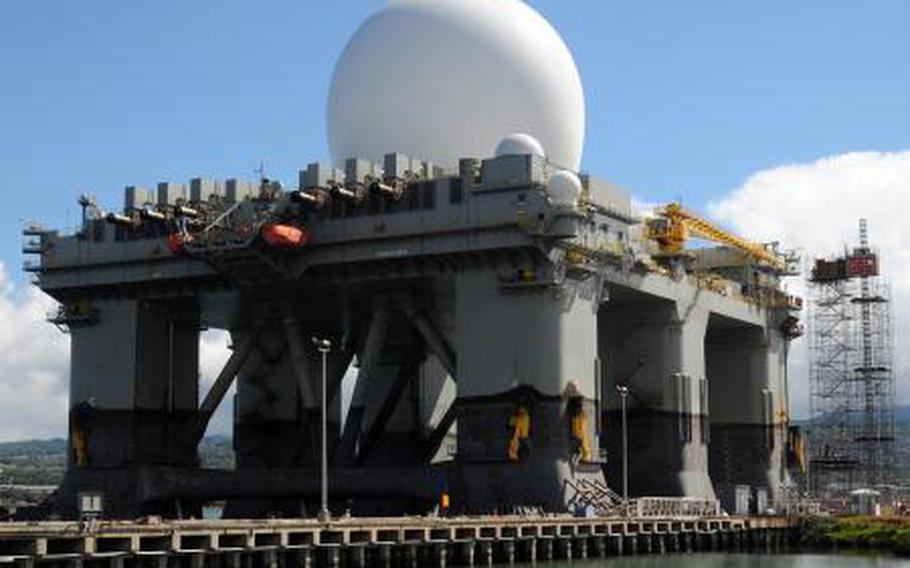
An X-Band radar system arrives in Pearl Harbor, Hawaii, July 14, 2010. (DVIDS)
TOKYO — The United States and Japan have agreed to station another ground-based missile defense radar in Japan, even as the two nations are still hashing out the deployment of MV-22 Ospreys to Okinawa, top defense officials announced after their meetings Monday.
Defense secretary Leon Panetta announced the U.S. will beef up its ballistic missile early warning defenses in Asia with a second ground-based X-Band radar capable of tracking missile launches.
“The purpose of this is to enhance our ability to defend Japan,” he said. “It’s also designed to help forward-deployed U.S. forces and it also will be effective in protecting the U.S. homeland from the North Korean ballistic missile threat.”
An American team landed in Japan in recent days to search out a site for the radar in southern Japan, though not on Okinawa, officials stressed. The United States operates another X-Band missile defense radar near the northern tip of Japan’s main island, Honshu.
A defense official speaking on the condition of anonymity said the growing array of radars — which includes a number of other X-Band radars on U.S. ships in the region — is aimed at countering a growing North Korean ballistic missile arsenal.
Although the United States also has been concerned about the development of powerful Chinese anti-ship ballistic missiles, the official said the radar emplacement was not aimed at China.
The announcement comes at a time of rising tension between Japan and China, which have long been at odds over a group of uninhabited islands in the East China Sea, called Senkaku in Japan and Diaoyu in China.
Each country claims the islands, but Japan purchased several of them in recent days from private owners, prompting China to send warships into the area.
Panetta said that while the U.S. takes no side in the territorial dispute, it stands by the U.S.-Japan mutual defense treaty. Both sides should commit to a peaceful outcome to the dispute, he said.
“It is in everybody’s interest for Japan and China to maintain good relations, and to find a way to avoid further escalation,” he said.
Panetta flew to Beijing late Tuesday for a three-day visit that included a meeting Wednesday with Chinese Vice President Xi Jinping, thought by many to be the country’s leader-in-waiting, as well as tours of military facilities.
Meanwhile, joint U.S.-Japanese committee negotiations over the Osprey’s safety are in their “final stages,” said Japanese Defense Minister Satoshi Morimoto. Flight operations can’t be approved until Japan makes a final determination that the aircraft doesn’t pose a risk to the people of Okinawa.
Japan has agreed that two recent crashes were the result of pilot error rather than the fault of the aircraft, 12 of which are in Japan but have not yet been moved to Okinawa, where they will be flown by U.S. Marines.
Panetta predicted the Ospreys could soon begin flight operations.
“I believe we can expect a positive announcement soon,” he said at a joint press conference at the Japanese defense ministry Monday.